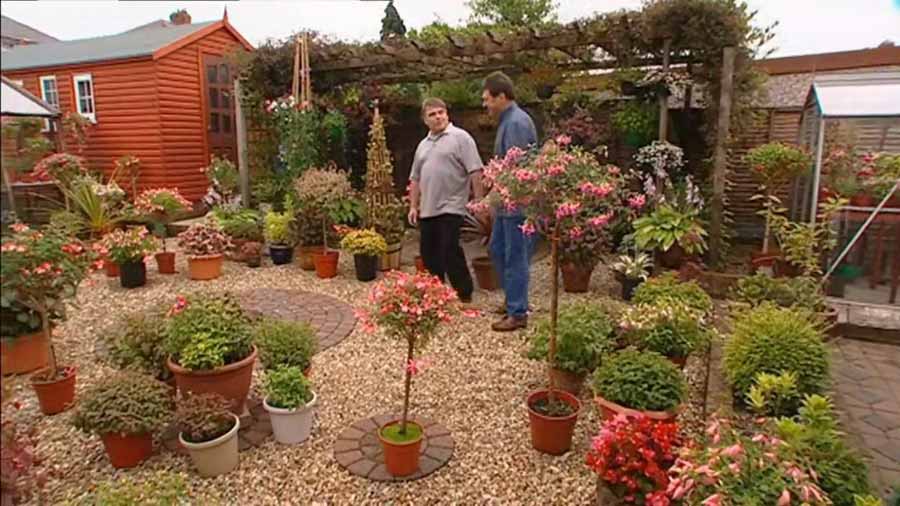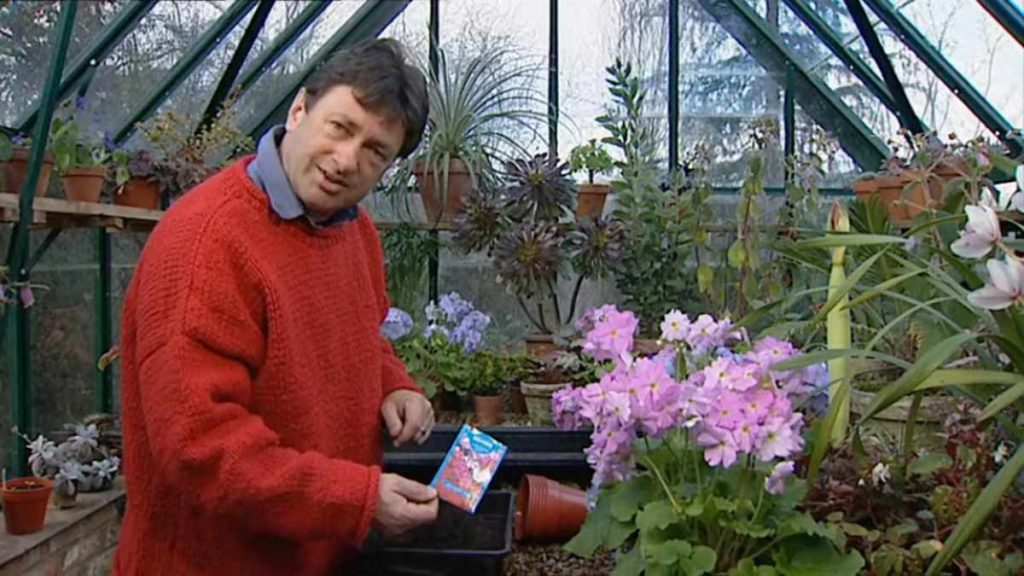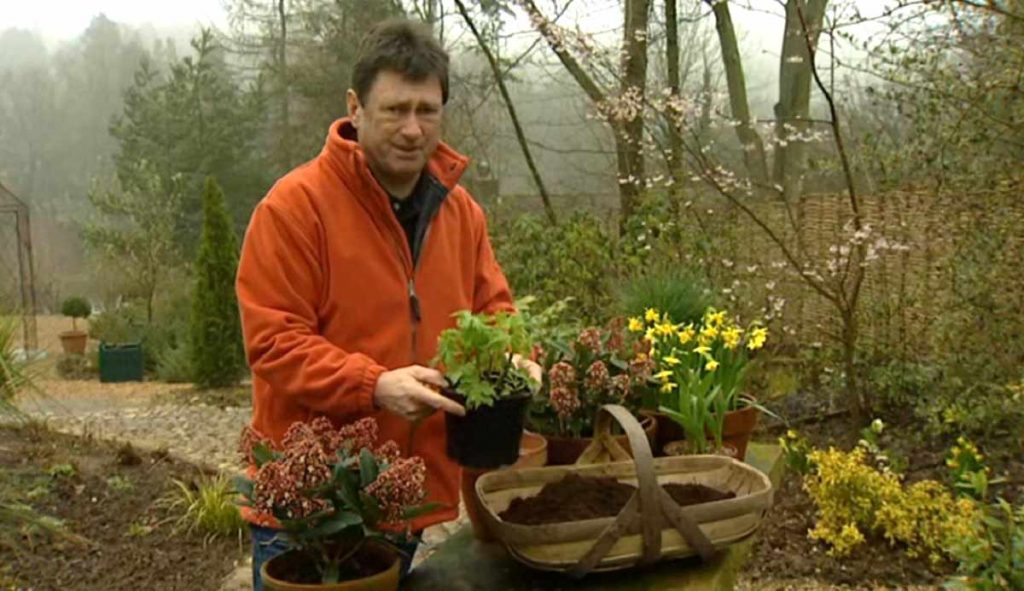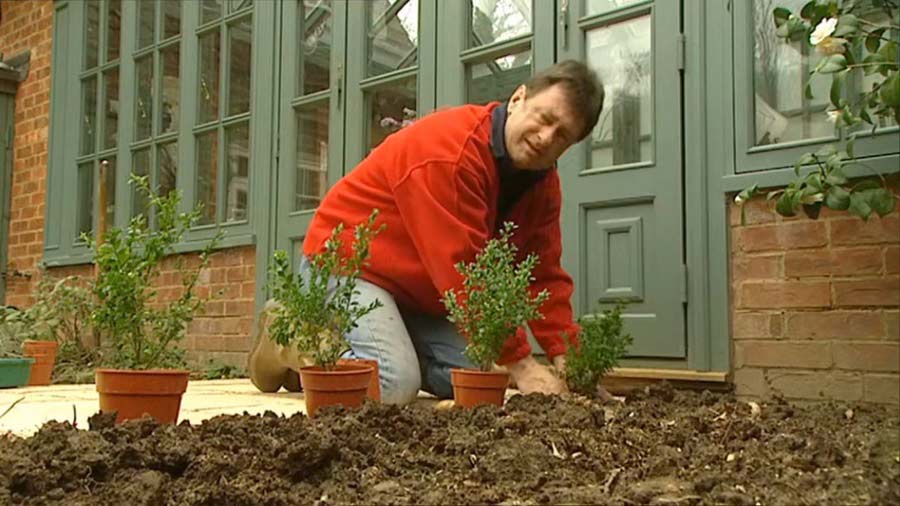Gardeners World episode 27 2002: Gardeners World team and Alan Titchmarsh present seasonal highlights from across the country, visit stunning gardens, meet the gardeners and find out their secrets of success.
Gardening show packed with good ideas, tips, advice from experts and timely reminders to get the most out of your garden, whatever its size or type.
Gardeners World episode 27 2002
Planting roses
Here are some steps to planting roses in the garden:
- In the area where the rose or roses are to be planted, mix in at least one bucket of well-rotted organic matter per square metre, forking it into the top 20-30cm (8in-1ft) of soil. Farmyard manure is ideal for this.
- Apply general fertiliser, at 100g per sq m (3oz per sq yd) over the surface of the planting area and fork it in to the same depth as the organic matter. Note: if you are using a mycorrhizal fungi (e.g. Rootgrow) then it is best not to apply a fertiliser at all as phosphorus (found in general fertilisers and superphosphate) can suppress the fungus.
- For each rose dig a hole roughly twice the width of the plant’s roots and the depth of a spade’s blade.
- Carefully tease out the roots of container plants because, if this is not done, the roots may be very slow to extend outwards, leaving the young plant more susceptible to drought in summer.
- Place the rose in the centre of the hole and, using a small cane to identify the top of the planting hole, ensure the graft union (i.e. where the cultivar joins the rootstock and the point from which the branches originate) is at soil level (not below as this is reported to increase the risk of rose dieback).
- Back-fill gently with the excavated soil and organic matter mixture.
- Spacing depends on type and habit. Check catalogue or label details.
- If you are replacing old roses with new roses, ensure that you dig out the soil to a depth and width of 45cm (18in) and exchange it with soil from a different part of the garden, as roses are at risk from replant disease, also known as soil sickness.
Meconopsis
Meconopsis is a genus of nearly 80 species of often short-lived or monocarpic perennials which flower just once and then die. They are best known as ‘blue poppies’ with large saucer-shaped flowers but many have attractive leaf rosettes.
Meconopsis grow best in the cooler and wetter areas of Northern England and Scotland and are a challenge in the South. Even a few days of bright sun in dry conditions will scorch plants in unsuitable sites.
They require a humus-rich, moist but well-drained, slightly alkaline to slightly acid soil. More important than the pH is that the soil has plenty of organic matter. Site plants in partial shade with shelter from cold, drying winds. They are particularly suited to woodland gardens but also do well in moist, shaded beds.
Never allow plants to dry out during the summer months. Apply a balanced fertilizer, such as Growmore, at 35g per sq m (10oz per sq yd) in spring and mulch round plants with garden compost or well-rotted manure.




